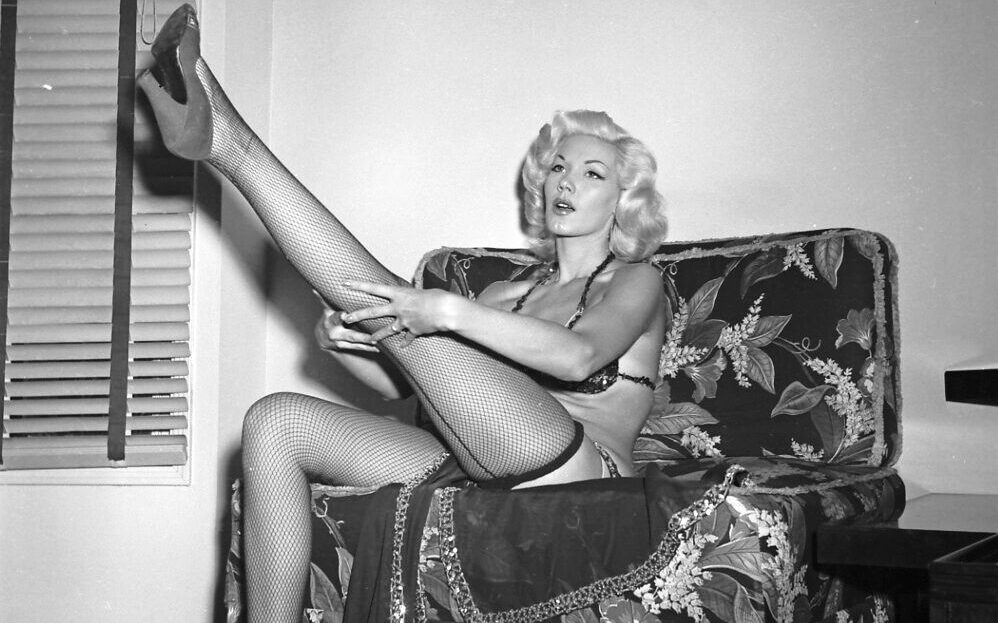At first glance, it’s just an old photo. Black and white, slightly grainy, carrying the signature postwar American aesthetic. In the frame — a stunning blonde in fishnet stockings, posed confidently on a floral armchair, staring straight into the lens. Her posture is bold but not vulgar. Her gaze — self-assured, yet hiding something. It’s hard to look away, not quite knowing why the image feels so magnetic.
This woman wasn’t a Hollywood star. She didn’t win Oscars or headline major blockbusters. But at one point, half the country knew her face. Her image graced magazine covers, glossy spreads, and secret postcards men tucked away in desk drawers. And yet, somehow, her name was nearly erased from history. As if her fame was forbidden — which only makes her story more compelling.
Who was she? Why so much noise around one photo? And why do we know so little about her today? The answers lie in the life of a woman who didn’t just pose for the camera — she unknowingly challenged an entire society. Her name was Misty Ayers — and she became a symbol of an era terrified of female sexuality, yet unable to look away.
In the 1950s, while women still fought for basic equality and wore “proper” dresses below the knee, Misty put on stockings and lingerie — and posed with her head held high. She worked as a pin-up model, appearing in magazines sold discreetly “under the counter”, drawing both admiration and scorn. But to many, she was the first to unapologetically own her beauty and freedom.
Unlike many models of her time, Misty didn’t fade into obscurity. She had a sharp mind and a keen sense of what her image represented. She managed herself as a brand long before that was a trend. And yet, her name slowly vanished from the record — a silent punishment from a patriarchal world.
Today, when we look at her photo, we see more than just a woman in lingerie. We see a pioneer. Bold, dignified, ahead of her time. And it’s time to give her the place she’s long deserved — in the story of freedom, womanhood, and 20th-century culture.













+ Немає коментарів
Додайте свій